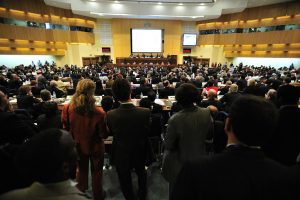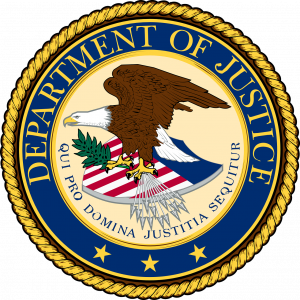Author: Yang Yang.
Ms. Yang is an Antitrust Partner at Fairsky Law Firm, which has a New York office. She is also a lecturer and researcher at China University of Political Science and Law. She authored a treatise on China Merger Control and is a member of the expert advisory team for Amendments to China Anti-Monopoly Law (with a total number of 8 members). Indeed, she leads the drafting of an expert report on suggested amendments to China Merger Control regime, Chapter 4 of Chinese Anti-Monopoly Law. She is also a frequent contributor to the Antitrust Report of LexisNexis and Competition Policy International (Asia Column and Asia Chronicle).
On June 24, 2022, the Chinese Standing Committee of the National People’s Congress passed amendments to the Chinese Anti-Monopoly Law, which will come into force on August 1, 2022. These amendments have been the first ones since the first adoption of Chinese Anti-Monopoly Law in 2008.
They cover the following topics: (i) antitrust investigations by the Chinese Antirust Bureau under the SAMR, (ii) merger control review by the Chinese Antitrust Bureau under the SAMR, and (iii) civil litigation or private actions seeking damages or claiming invalidations of contractual provisions based on a violation of Chinese Anti-Monopoly Law. These amendments mark significant changes to China’s antitrust regime.
You might also enjoy the following articles that I’ve authored on The Antitrust Attorney Blog:
Draft Amendment to Chinese Antitrust Law Calls for Further Clarifications
Administrative Enforcement by Chinese Antitrust Bureau
With regard to antitrust investigations by Chinese Antirust Bureau under the SAMR, the changes primarily relate to (a) vertical agreements––i.e., RPM; (b) hub-and-spoke agreements, and (c) to the abuse of dominance by internet/technology companies.
Vertical Agreements
These amendments introduce a new “safe harbor” rule for vertical agreements based on the market share of investigated parties in their relevant markets. They now supply more detailed guidance on relevant-market definition, including specific precedents for certain industries. This guidance reduces uncertainty for the investigated parties.
Hub-and-Spoke Agreements
Hub-and-spoke agreements involve manufactures and distributors not entering directly into Resale Price Maintenance provisions (RPM), but rather holding meetings to facilitate horizontal agreements. These fall within the scope of prohibited horizontal agreements in Chinese Anti-Monopoly Law.
For any investigation relating to horizontal or vertical agreements, there is also a new issue of whether any party to such agreements has hosted meetings, organized exchanges of information, or provided substantial facilitation. This also calls for more future guidance from the regulators.
Abusive Conduct by Technology Companies
For internet companies, the provision on prohibiting abusive conduct by algorithms or platform policies is not new. Algorithms and platform policies are commonly used by internet companies. But this new provision may indicate a potential priority from law enforcement. This seems to be consistent with merger control rules and the Chinese Antitrust Bureau’s priority relating to markets impacting the national economy and people’s daily lives, which includes areas of public facilities, pharmaceutical manufacturers and internet platforms.
Merger Control
In the merger control realm, there are three main changes: (i) notification of voluntary transactions, (ii) the introduction of a “Stop the Clock” mechanism, and (iii) a new merger review process by categories and levels. These changes can cause the following uncertainties in practice and may require more detailed guidance.
Notification of Voluntary Transactions
Under this new provision the Chinese Antitrust Bureau has the power to require parties to notify transactions before they are implemented if there is evidence of potential anticompetitive effects. There is no mandatory obligation, however, to notify transactions that do not trigger the relevant merger thresholds before their implementation.
But, despite the new law, current rules do encourage voluntary transactions involving, for example, active pharmaceutical ingredients. These changes create uncertainty on whether the authority has any power to reverse such transactions or impose remedies after their implementation.
In addition, under the new law, the authority must first require the parties to notify the transaction. If the parties do not comply with the notification request, the authority will initiate an official investigation. This process allows the parties to provide evidence and prove that the transaction does not have anticompetitive effects. The authority then has the power to approve (with or without remedies), or prohibit the transaction.
“Stop the Clock” Provision
The new “Stop the Clock” provision grants the authority more time to review the transaction if the notifying parties fail to provide documents on time. At the same time, the notifying parties will now have more time to respond to the authority and to other parties’ concerns. But under the current law and rules, the authority usually requires the parties to withdraw and refile a notification if the review process has reached the 180-day deadline. Therefore, the new law may restrain the Chinese Antitrust Bureau from extending an investigation longer than 180 days. We will have to see what happens.
New Merger Review Process by Categories and Levels
Finally, the new merger review process by categories and levels calls for more detailed rules on implementation and policies and creates uncertainty as to whether some industries will have higher scrutiny than others.
 The Antitrust Attorney Blog
The Antitrust Attorney Blog











